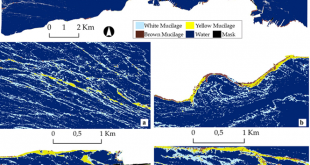International Journal of Environment and Geoinformatics , 3, 11-25, (2016)
Analysis of Different Interpolation Methods for Soil Moisture Mapping Using Field Measurements and Remotely Sensed Data
Abstract: In this research, we comparatively analyzed different interpolation methods to create soil moisture maps by using field measurements and remotely sensed data. Impacts of number and distribution of field measurements on interpolation procedure was also investigated. Soil moisture measurements of 36 different locations collected from Büyükçekmece water basin and RADARSAT-1 image of the same region obtained simultaneously on 2nd of September 2010 to create soil moisture maps of the study region. Locations of 36 field measurement points were selected considering land use/cover, soil type, elevation, spatial distribution and accessibility to transportation lines. 25 of sample points were used as Control Points (CPs) and used for soil moisture map creation and 11 of them were reserved and used as Independent Check Points (ICPs) to validate the accuracy of each approach applied. Two different experiments were conducted with 25 and 15 CPs to analyze the impact of number and spatial distribution on interpolation. Inverse Distance Weighting (IDW), Global Polynominal Interpolation (GPI), Local Polynominal Interpolation (LPI), Radial Basis Functions (RBF), Kriging, Cokriging and regeression methods were applied to different combination of data sets to create soil moisture maps and obtained results were compared.

Available Online: https://dergipark.org.tr/tr/pub/ijegeo/issue/28172/306477
 UHUZAM İTÜ – Uydu Haberleşme ve Uzaktan Algılama UYG-AR Merkezi
UHUZAM İTÜ – Uydu Haberleşme ve Uzaktan Algılama UYG-AR Merkezi 